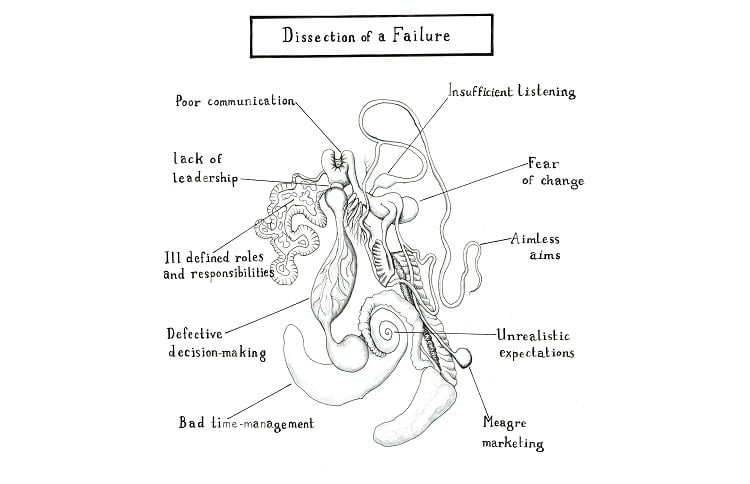
A playful approach to the idea of failure by Nicole Mollett and Sarah Butler
Capturing the essence
When invited to carry out a creative evaluation of the first three years of Creative People and Places, Sarah Butler decided that the best approach was to have fun.
More than 100 stories is a digital collection of texts, images, sound pieces and animations, the result of an 18-month process of creative evaluation by myself (a writer) and visual artist Nicole Mollett. We were commissioned by the Creative People and Places (CPP) network to creatively evaluate its first three years, find a way to tell the story of the programme, explore what had and hadn’t worked, and find a way to capture its impact on individuals, communities and places.
It has managed to capture the essence of the programme in a way that more technical rigorous evaluation cannot
It makes sense for a programme looking to revolutionise how art is created and experienced to harness the skills of artists to both tell its stories and reflect on its successes and failures. And yet Holly Donagh, Chair of the national steering group for the first phase of CPP, commented: “As someone with a strong interest in research, who is often critical of the quality of research produced by the arts sector, I was sceptical of the value of an arts-based approached to evaluation and it took a number of discussions at the national steering group to agree to this approach.
“I now feel that the most authentic record we have of the first three years of CPP is within ‘More than 100 stories’ and it has managed to capture the essence of the programme in a way that more technical rigorous evaluation cannot.”
Challenges of creative evaluation
Nicole and I struggled with the term ‘creative evaluation’ throughout the project. CPP is a huge programme, with 21 large and complex projects across the UK. The commission was substantial, but not huge, and whilst between us we visited every place and were in touch with programme directors and staff on the phone and via email, there was no way we could genuinely understand the successes and failures of each and every project with our limited time and resources.
We were uncomfortable with the idea, inherent in the term ‘evaluation’, of passing judgement. We were excited about exploring the stories and the learning of the programme, but did not want to put ourselves in the position of saying that specific pieces of work were good or bad. We didn’t feel qualified or informed enough to do so, but we also didn’t feel it was the most useful thing for us to do.
And how would we balance the two sides of the phrase ‘creative evaluation’? How would we make new work that had value in and of itself and that also said something meaningful about the CPP programme?
A planned approach
Acknowledging the limitations of time and geography, we decided on two things. The first is spelt out in the title. One or two pieces of work weren’t going to do justice to the complexity of the programme, so we would make lots – a collection of small works, hosted online, that together would contribute to a broader picture of the programme and its learning.
The second decision was to take a thematic approach. We chose ten themes: confidence, decision-making, failure, language, local, partnership, people, taste, time and trust, chosen in close consultation with CPP staff. The themes allowed us to connect different elements and localities of the CPP programme, and make work that said something relevant and specific about how and why things had worked (or had not).
These themes became the structure of the work, allowing us to focus both our research and our making. The final website invites the viewer/reader to choose a theme and explore the associated work, then return to the theme page in order to investigate another.
As the work progressed, we also realised that we wanted our role to be about asking questions (without necessarily answering them), about reflecting the programme back to itself and others, and about looking from a different angle to see it in a different way. We always thought of ourselves as artists rather than evaluators, looking for opportunities to create new thought-provoking work and endeavoring not to let the idea or message of a piece get in the way of its status as a piece of art.
We also decided to have fun. Nicole’s work is inherently playful, and we often took a light-hearted approach to our pieces. Evaluation can be seen as deadly serious, but we wanted to provoke, poke fun, make people smile, and at the same time invite them to think.
The end-result
In the quote above, Holly Donagh suggests that the evaluation captured the essence of the programme in a way that more technical rigorous evaluation cannot. It isn’t ‘hard’ evaluation, in that there are no numbers, graphs or case studies. Yet it arguably captures something about the CPP programme that might not be captured in traditional evaluation reports: the connections between projects, the common struggles, some of the creative solutions and the magic that can happen through art.
We wouldn’t argue that it is a replacement for other kinds of evaluation, but it is a complement, a different and potentially more joyful way to engage people in thinking about the CPP programme.
Sarah Butler is a freelance writer.
www.creativepeopleplaces.org.uk/more-than-100-stories
Tw #MoreThan100Stories
This article, sponsored and contributed by Creative People and Places, is part of a series exploring ways in which we can all embed inclusive engagement practices in our work.
Join the Discussion
You must be logged in to post a comment.